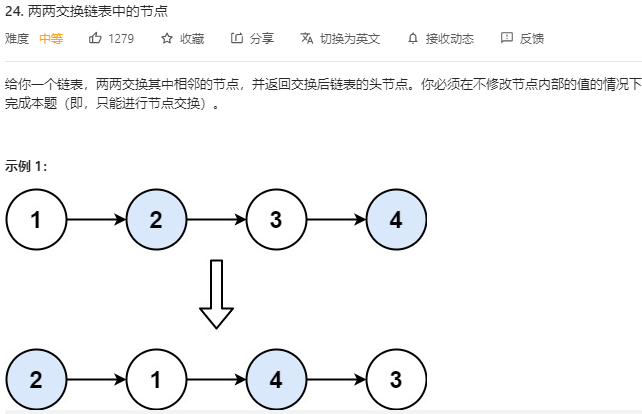|

方法一:迭代
/**
* Definition for singly-linked list.
* public class ListNode {
* int val;
* ListNode next;
* ListNode() {}
* ListNode(int val) { this.val = val; }
* ListNode(int val, ListNode next) { this.val = val; this.next = next; }
* }
*/
class Solution {
public ListNode swapPairs(ListNode head) {
ListNode dummyHead = new ListNode(-1);
dummyHead.next = head;
ListNode pre = dummyHead;
ListNode cur = head;
while (cur != null && cur.next != null) {
ListNode next = cur.next.next;
pre.next = cur.next;
pre.next.next = cur;
cur.next = next;
pre = cur;
cur = cur.next;
}
return dummyHead.next;
}
}
方法二:递归
/**
* Definition for singly-linked list.
* public class ListNode {
* int val;
* ListNode next;
* ListNode() {}
* ListNode(int val) { this.val = val; }
* ListNode(int val, ListNode next) { this.val = val; this.next = next; }
* }
*/
class Solution {
public ListNode swapPairs(ListNode head) {
//递归终止条件
if (head == null || head.next == null) return head;
ListNode firstNode = head;
ListNode secondNode = firstNode.next;
ListNode thirdNode = secondNode.next;
//单次过程:相当于一个含三个节点的链表交换两个节点
//使第三个节点的递归结果成为第一个节点的下一个节点
firstNode.next = swapPairs(thirdNode);
//使第一个节点成为第二个节点的下一个节点
secondNode.next = firstNode;
return secondNode;
}
}
| 